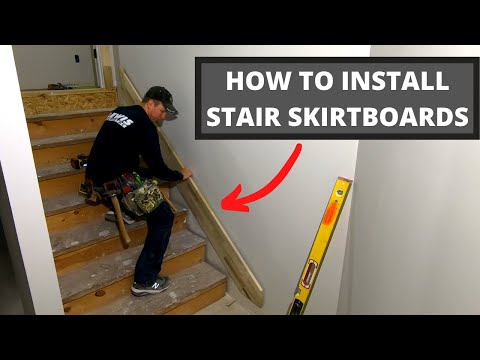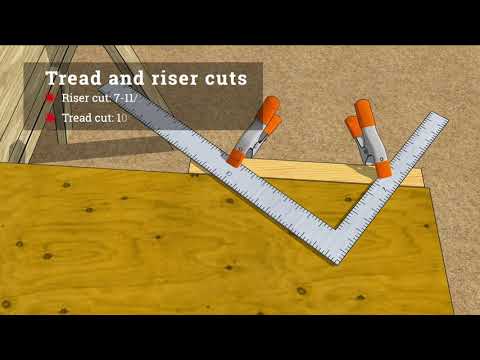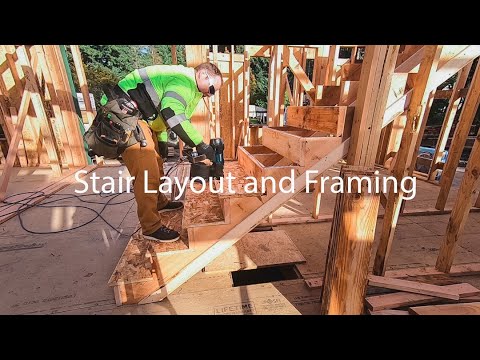This animation shows how to lay out a skirtboard that sits against the wall and ties into the baseboard above and below the stairway. This is the bare basics of a *perfect-world* trim-out scenario, and the world of stair trim-out is seldom perfect. Greg Vanden Berge has many stair trim-out videos on his YouTube channel, and many books on the topic, too, available on his website.
Use straight lumber to gauge the stairway condition
Begin with a straight 1 by 12 set on top of the steps. Use tape if needed to hold it against the wall. First, check for any gaps between the board's bottom and the corner of the tread and riser.
If there are gaps, this isn't the best video for you; check some of the other stair trimout videos in his playlist. This video assumes straight steps and straight lumber to create a finished straight skirt board.
Mark the treads and risers on the skirtboard with a framing square
Position the framing square on top of the tread against the riser. Marks tread depth and riser height on the framing square. If the measurements for each step are consistent, proceed. If not, go back to the playlist for alternative methods.
Use a level to align the framing square's point with the tread and riser. Mark the first step or notch on the skirtboard. Repeat at the bottom. Once positioned, draw lines for cutting notches. Connect the lines for precision.
Connect the marks to draw the cut lines on the skirtboard
Shift the framing square to the next position, aligning marks from the previous step. Reposition as necessary. After marking the remaining spots, provide different views of the board. Later, place it on sawhorses or a stable surface for cutting.
Slide the skirtboard into position. With luck, there will be no gaps between risers and treads. Cut the top and bottom to tie into the baseboards.











